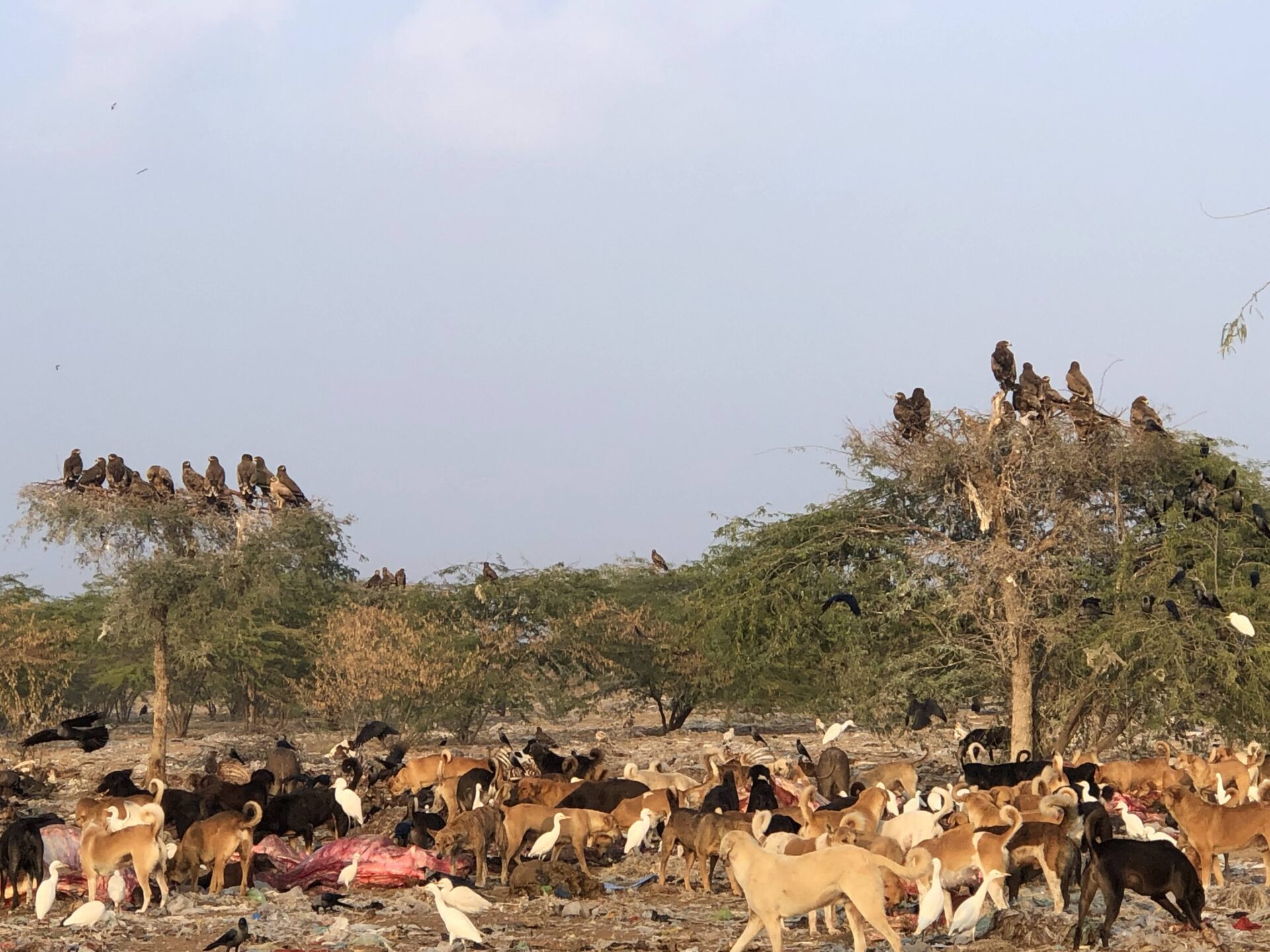NEW DELHI
The declining population of endangered vultures has proven to be a catalyst for the growing stray dog population at landfills and dump sites across the country where the canines are monopolizing the task of disposing of carcasses instead of their winged competitors.
Chetan Misher, a Wildlife Biologist, told The Sunday Guardian, “During the 1990s, the vulture population declined drastically. This is the same time when it is assumed that the dog population has risen because there are plenty of carcasses left to be consumed
According to a research paper, “The global impact of domestic dogs on threatened vertebrates”, domestic dogs have contributed to 11 vertebrate extinctions and are a known or potential threat to 188 threatened species worldwide. This includes 96 mammals (33 families), 78 birds (25 families), 22 reptiles (10 families), and three amphibian (three families) Species. Of these threatened species, 30 are classed as Critically Endangered (two of which are classed ‘possibly extinct’), 71 Endangered, and 87 Vulnerable.
Misher said: “Dogs have become the top predator in the ecosystem right now, which is not natural but subsidized by humans. So, they affect all the species. We have seen them affecting foxes, jackals, and even spiny-tailed lizards, which are on the verge of extinction in western Rajasthan. They do actually dig up the burrows and they take out the lizards and eat them. So basically, in each level of the food chain, they are affecting from the smallest species to the largest species in the system. So it is impacting each level of the ecosystem in some way.”
“They cannot survive on their own. So, it is always human subsidies in the form of protection, shelter, or food we provide them. And that subsidies are driving the reach to a more remote area. So now, we see we have this putting water holes or making water available for the wildlife. That also works for dogs as well. So, dogs are unable to roam in the dry area,” he added.
Responding to the fact of how efficient dogs are as scavengers as they are replacing vultures, he said: “Dogs are not designed to scavenge, but most predators do scavenging when they don’t have enough prey or something. But since dogs are mostly subsidized by humans, they feed on whatever human beings provide and scavenging is one of the major part of their diet in some of the areas, especially in areas where we throw these animal carcasses. All the carcasses on sites now basically are dominated by dogs rather than vultures. But when we talk about who is the more efficient scavenger, definitely dogs are not efficient scavengers. Vultures are much better at scavenging because they consume carcasses faster than dogs. The dogs mostly eat the larger meat part of the carcasses. But they do not clean the entire carcass the way vultures do.”
There’s an estimate that a group of griffons can consume a cow-sized carcass in less than 40 minutes as seen in the Thar desert, but a similar number of dogs will take days. The solution to the “dog” problem requires a multipronged approach from rural and urban civic agencies, public health departments, animal welfare organizations, and wildlife conservation groups. Together, they must work to articulate a common vision that balances conservation of wildlife and animal welfare. An argument that should be put forward more forcefully is that the welfare of companion animals such as dogs, is best served under the close guardianship of humans.

